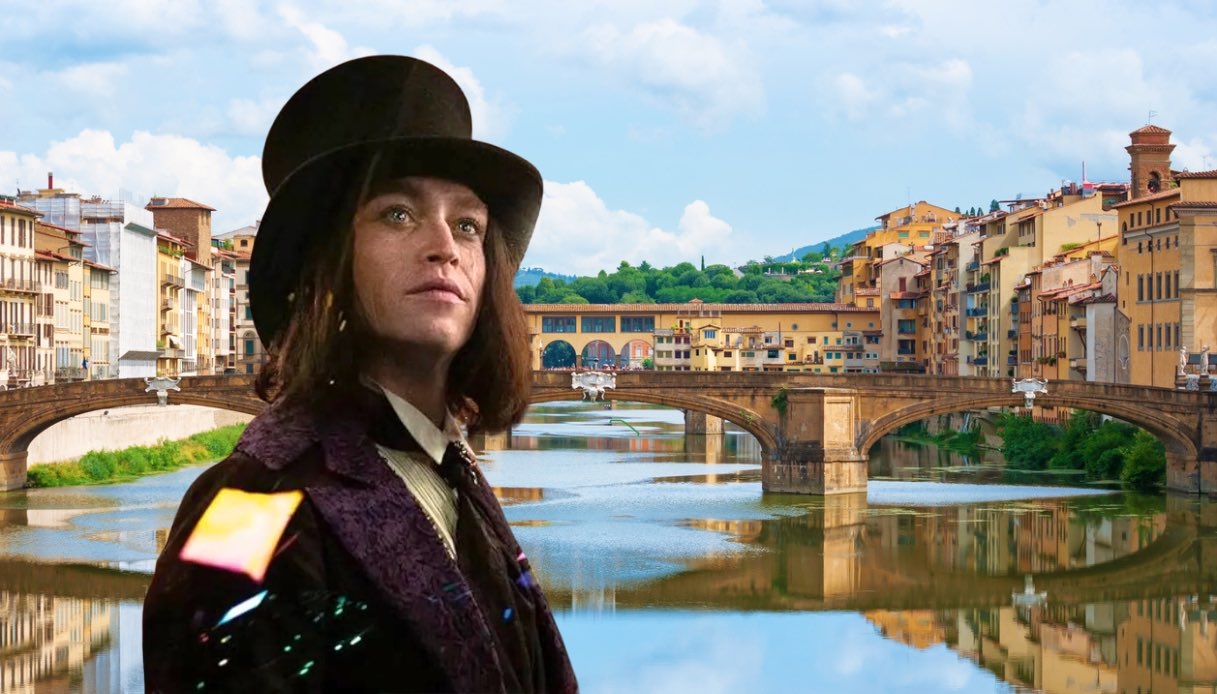Dracula: The Lost Love Locations: From Belle Époque Paris to the Magic of Florence

Luc Besson reinvents the Dracula myth, bringing the gothic charm of Transylvania to the heart of fin-de-siècle Europe. Dracula: The Lost Love , inspired by Bram Stoker's immortal novel, transports the cursed love story of the vampire prince into a new visual dimension, amidst the decadent atmosphere of late-19th-century Paris, the snowy landscapes of Finland, and a distinctly Italian touch with Florence.
What is the movie about?In the film, Caleb Landry Jones plays Prince Vladimir , destined to become Dracula after losing his beloved, Elizabeth. In Belle Époque Paris, his damned soul meets the face of that eternal love again in Mina ( Zoë Bleu ), while Matilda De Angelis is his friend Maria and Christoph Waltz plays a dark vampire-hunting priest, the spiritual heir to Stoker's Van Helsing .
Where was it filmed?To recreate the French capital at the turn of the century, Besson chose the Dark Matters studios in Tigery, in the Essonne region of Paris, where monumental and detailed sets were built, including opera houses, gas-lit boulevards, and aristocratic salons. The French capital also served as a backdrop for the film by the director of Dogman, The Fifth Element , and Leon , such as the Palais Royal where Mina and her friend Maria wander through a large fair held in the prestigious gardens. Several scenes were then filmed in the surrounding streets, from Place André Malraux to Place Colette, via Rue de Montpensier, and in the alleys of the Palais Royal estate.
Another key Parisian location in the film is the Hôtel-Dieu . It is inside the oldest hospital in Paris, founded in 651 by Bishop Saint Landry under Clovis II, that Doctor Dumont (Guillaume de Tonquédec) meets the monster-hunting priest, played by Christoph Waltz. The characters can be seen strolling under the arcades of the galleries surrounding the small French garden and its central courtyard, or meeting in the chapel.
Some exterior shots took place between Kuhmo and the Kainuu region of Finland , where Besson found snowy, wild landscapes, perfect for depicting the desolation and solitude of 15th-century Transylvania. The scenes were shot between March and July 2024, in a harsh climate yet ideal for capturing the gothic, melancholic atmosphere that permeates the film.
There's also a touch of Italy in the new Dracula. One of the most evocative sequences is set on the Ponte Vecchio in Florence , recreated entirely in computer graphics thanks to the work of the masters at Rodeo FX, winners of an Oscar for The Golden Compass.
The iconic bridge over the Arno River was digitally reconstructed using photographic references and a complex visual effects composite. The scene features a long tracking shot of the Arno River, gradually approaching one of the windows of the rooms overlooking the bridge, until it enters the room where Dracula awaits his beloved Mina.
“ We combined highly detailed digital work with impeccable composition, eliminating any reflections of the crew to maintain the illusion of reality ,” said Rodeo FX. In addition to the physical and digital sets, Besson was able to rely on cinematography that blends realism and magic, alternating the warm, decadent tones of bohemian Paris with icy, foggy landscapes, symbolic of Dracula 's torment.
The result is a film in which history, romance, and fantasy blend into a visually powerful tale, where even technology is put at the service of emotion. As the Rodeo FX technicians themselves explain: " Our visual effects are striking yet invisible: they blend with the narrative and amplify the melancholic beauty of Besson's world. "
siviaggia





